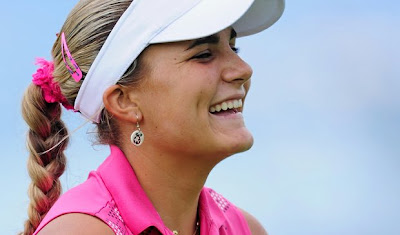My husband and I moved into our first home. Very exciting, but moving is such a drag-- and it kept me away from blogging. But I'm back now, with lots to say!
Also two weeks ago today, on May 24th, Australian child beauty pageant opponents, and some supporters, held rallies across the country. These protests were organized in response to Texas-based Universal Royalty organizing an "American-style" child beauty pageant to be held in Melbourne next month (I've written more about this here). Although several protests were held in capitol cities, and the press covered the events, my sense is that they were not received as well as organizers had hoped.
The goal of the opposition is to actually get child beauty pageants deemed illegal in Australia. Or to at least institute a minimum age requirement (like 6-years-old instead of 6-weeks-old). Without an overwhelming turnout at the rallies, and for other legal reasons like the privacy of the family, Australian lawmakers have offered a lukewarm reaction. It seems unlikely that such legislation will pass, at least at the moment.
Another issue is that the story has somewhat morphed-- if not into a pro-pageants stance, then into a sympathetic angle for some pageant mums. Why? All the opposition and press coverage led to some mothers receiving death threats. For example, this story details the hate mail one mother received.
At the same time, as has happened with child beauty pageants before, all the attention actually helps the business end of the enterprise. Now, not only will pageants be organized in Australia, but now events will also take place in New Zealand. All press is good press, right? Increased media coverage of the UK pageant circuit also seems to be heating up-- and at least one contestant entered due to all the press interest (I have some thoughts on a journalist mother entering her daughter in a child beauty pageant for research purposes-- none of which are positive).
While the press has eaten the story up, and lawmakers have seemingly ignored it, another group of professionals has weighed in-- the Royal Australian and New Zealand College of Psychiatrists. On the day of the rallies the professional organization released a statement saying child beauty pageants are detrimental to children's mental health. I don't necessarily disagree with many of their sentiments, but as I've explained before we simply don't have the data to back-up statements like, "The mental health and developmental consequences of this are significant and impact on identity, self esteem, and body perception." To be considered medical research, and worthy of publication in peer-reviewed journals, more work must be done.
That said, comments made by Dr. Phillip Brock, Chair of the Faculty of Child and Adolescent Psychiatry, in this newspaper article deserve further thought and clarification. Dr. Brock states his opinion on child beauty pageant headshots, like those I show below: "That is a photograph that can be interpreted as alluring and appealing to the sexual instincts of the observer, and if that observer is an adult then it's voyeuristic."
Pageant photographers use a technique known as "airbrushing" to achieve the glassy, wide-eyed look in the eyes, the perfect lips, and the flawless skin. You can see a proof before airbrushing, and then the final product, at this website: http://awholelotofnothing.net/this-is-not-ok-baby-beauty-pageants/.
What is the purpose of airbrushing? Besides trying to create a particular "pageant look," I have to agree with Dr. Brock that these changes are ones that are purely sexual. When I say sexual I mean that certain biological triggers cue a response that is hardwired into our brains. As I've mentioned before, The Survival of the Prettiest by Dr. Nancy Etcoff has a good explanation of some of these, as do books by historians Lois Banner and Kathy Peiss on the history and development of make-up and beauty culture in the US.
What are these sexual triggers? First, the eyes. Wide eyes, with long lashes, are a sign of sexual arousal, which signals a healthy partner for mating. Some have called retouched eyes in pageant pictures "spider eyes," which doesn't sound very sexy to me, but they are. Similarly, darkened lips and cheeks are signs of arousal as well-- and the lips and cheeks are always colored in these retouched images.
As a sociologist I don't think all things at child beauty pageants are sexually hardwired (for example, many criticize girls blowing kisses as sexual, and I believe such an action totally needs to be interpreted in its social context-- which is NOT sexual, but rather seen as cute and precocious at child beauty pageants). However, when it comes to these pictures, it's hard to disagree with the science.
In any case, the child beauty pageants steam ahead in Australia, and in the US, as Toddlers & Tiaras returns to TLC on June 15th. Believe me, my DVR is set. Is yours?

